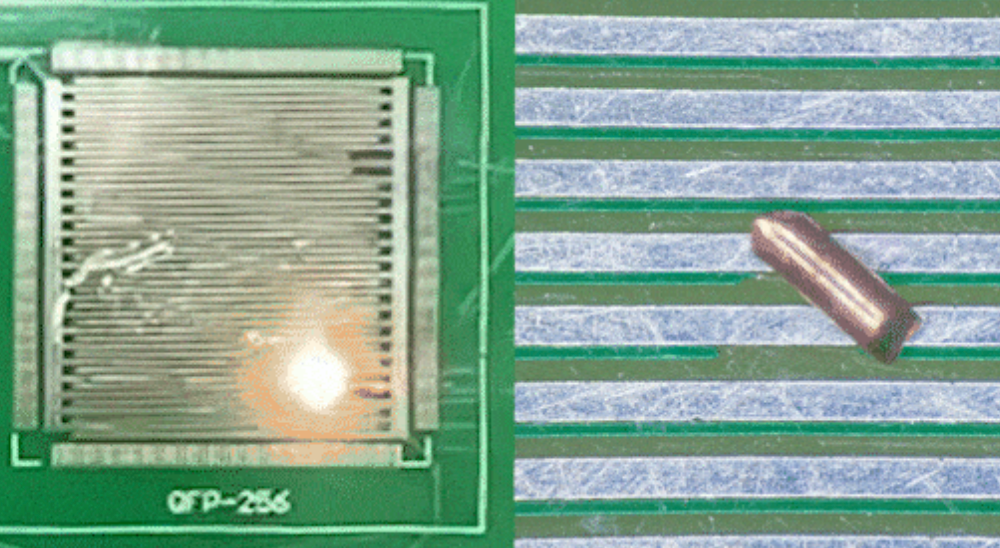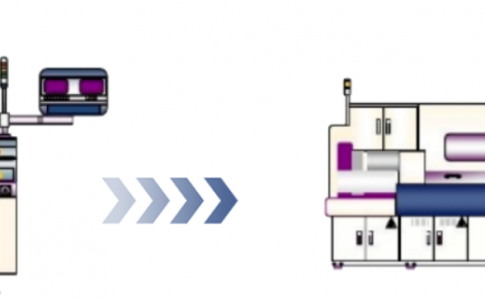1. Understanding the Impact of Particulate Contaminants
Particulate contaminants refer to various tiny particles present in electronic components or systems. These particles can originate from multiple sources, including materials used in the manufacturing process, clothing and skin of operators, equipment wear, and environmental dust. They can cause a variety of problems: Metal particles may bridge conductive parts of a circuit, causing short circuits that can damage equipment performance or even lead to complete failure (Figure 1); mechanical moving parts, such as connectors, may be blocked by particles, causing mechanical failures; some particulate contaminants containing corrosive substances may corrode metal parts or alter material properties; in optical systems, particulate contaminants can scatter or absorb light, reducing image quality.
Figure 1: Short Circuit Caused by Particles
2. Risk Assessment of Particulate Contaminants in Electronic Components
2.1 Risk Assessment Method I: Breakdown Probability Assessment Based on Breakdown Voltage Testing
When two charged parts are connected, an electrical contact is formed. In electrical engineering, the probability of contact is a key factor, especially when assessing the risk of electrical short circuits caused by particulate contaminants. Factors affecting contact include contact normal force, surface topography, surface oxide layer, contact duration, conductivity, voltage difference, and thin films and other contaminant layers (Figure 2). When two contact surfaces come into contact, only a very small area actually makes contact due to surface roughness. These areas are known as effective contact areas. The transfer resistance and completion of electrical contact are determined by the conditions of these local contact points.
Figure 2: Particle Contact Model
2.1.1 Test Preparation
First, prepare adjacent conductors (such as comb-type circuit boards) and metal particles. Manually place the particles on top of the two conductors and visually confirm that the particles are in geometric contact with both conductors.
2.1.2 Test Setup
Set the DC voltage to gradually increase from 1V to 60V, increasing by 1V each time. Maintain the voltage at each point for a certain duration and set appropriate current-limiting conditions.
2.1.3 Result Recording
Record the voltage at which a significant change in current occurs; this is the breakdown voltage. To obtain statistically significant results, after each test, reposition the particles and test again until 25 breakdowns have been achieved, with a maximum of 50 measurements.
2.1.4 Contact Probability Calculation
Calculate the probability of short-circuit contact using the following formula:
2.2 Risk Assessment Method II: Electrical Short Circuit Risk Assessment Based on Modeling
2.2.1 Identifying Critical Areas
First, identify the critical areas on the circuit board that may be at risk of short circuits due to particulate contaminants. This usually involves a detailed analysis of the circuit board design to identify all possible short-circuit paths.
2.2.2 Determining Particle Load
Determining the particle load is an important step in risk assessment. This is usually done through cleanliness analysis, as described in standards such as VDA 19.1 or ISO 16232. The determination of particle load helps us understand the actual number of particles in motion during operation.
2.2.3 Short Circuit Risk Calculation
The German Electrical and Electronic Industry Association (ZVEI) has developed a model-based evaluation tool that can calculate the risk of electrical short circuits based on input data. The input data includes:
-
Number of particles of different sizes
-
Size of critical areas
-
Installation position of the PCBA
The tool calculates the risk of electrical short circuits based on these data, usually expressed in ppm (Figure 3).
Figure 3: Example of Component Electrical Short Circuit Risk Assessment Results
3. Conclusion
In summary, through the two methods mentioned above, we can systematically and effectively conduct a risk assessment of particulate contaminants in electronic components. This allows us to accurately identify key risk sources and provides strong support for the design and manufacturing stages, thereby comprehensively improving product quality and reliability.





No comments